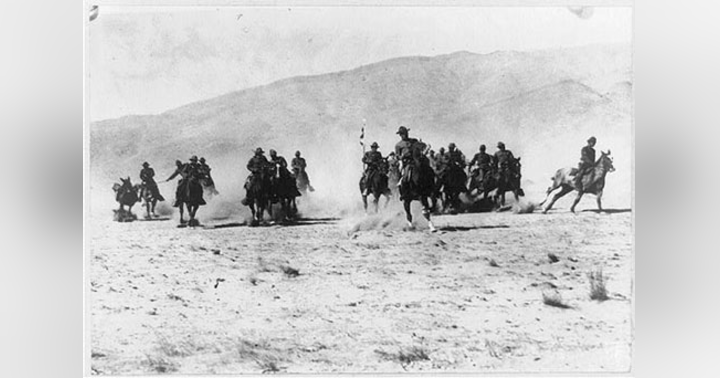The Evolution of US Military Technology: From Muskets to Cyber Warfare

The history of the United States military is a tale of constant adaptation and innovation. Across the centuries, technological advancements have played a pivotal role in shaping military strategy, tactics, and capabilities. From the early days of muskets and cannons to the cutting-edge world of cyber warfare, this article traces the remarkable journey of US military technology evolution.
Early Weaponry: Muskets and Cannons
The US military's origins date back to the American Revolutionary War. During this period, muskets and cannons were the primary weapons of choice. Muskets, smoothbore firearms, were slow to reload and had limited accuracy, but they represented a significant advancement over traditional muskets. Cannons, on the other hand, allowed for the bombardment of enemy positions and fortifications.
The Industrial Revolution and Rifled Firearms
The mid-19th century witnessed the impact of the Industrial Revolution on military technology. Rifled firearms, which featured spiral grooves inside the barrel to improve accuracy, replaced smoothbore muskets. This technological leap greatly increased the effective range and precision of infantry weapons. Additionally, the introduction of repeating rifles, like the famous Winchester Model 1866, revolutionized infantry tactics.
The Age of Mechanization: Tanks and Aircraft
The early 20th century brought about another significant shift in military technology. The development of tanks, such as the British Mark I tank in World War I, introduced a new era of armored warfare. Tanks provided unprecedented mobility and firepower on the battlefield.
Similarly, aviation technology rapidly advanced, leading to the birth of airpower. Fighter planes, bombers, and reconnaissance aircraft became crucial elements of modern warfare. The Battle of Britain during World War II showcased the pivotal role of aircraft in defending a nation.
The Nuclear Age: Atomic Bombs and Missiles
The conclusion of World War II marked the dawn of the nuclear age. The US military's development and deployment of atomic bombs demonstrated the devastating power of nuclear weapons. The Cold War era witnessed an arms race between the United States and the Soviet Union, leading to the development of intercontinental ballistic missiles (ICBMs) capable of delivering nuclear warheads across continents.
The Digital Revolution: Computers and Communication
The latter half of the 20th century saw the emergence of the digital revolution. Computers and communication technology became integral to military operations. The development of the internet and satellite communication systems revolutionized how the military communicated, gathered intelligence, and conducted operations.
Precision Guided Munitions and Stealth Technology
In recent decades, the military has seen significant advancements in precision-guided munitions (PGMs) and stealth technology. PGMs, such as GPS-guided bombs, have greatly improved the accuracy of airstrikes, reducing collateral damage. Stealth technology, seen in aircraft like the B-2 Spirit bomber and F-22 Raptor fighter jet, enhances survivability and mission success.
Cyber Warfare and Information Dominance
As we move into the 21st century, military technology has entered the realm of cyberspace. Cyber warfare has become a critical domain for modern militaries. The US military has invested heavily in cybersecurity, recognizing the importance of protecting digital assets and maintaining information dominance.
Future Frontiers: Artificial Intelligence and Space
Looking ahead, the US military is exploring the integration of artificial intelligence (AI) into various aspects of warfare, from autonomous vehicles to decision support systems. Additionally, space has become a new frontier, with a focus on satellite technology and space-based capabilities.
Conclusion
The evolution of US military technology is a testament to human innovation and adaptability. From the days of muskets and cannons to the era of cyber warfare and space exploration, technological advancements have continuously reshaped the nature of military conflict. As we stand on the precipice of new frontiers in AI, space, and beyond, one thing remains clear: the US military's commitment to staying at the forefront of technological innovation is unwavering. In an ever-changing world, the ability to adapt and harness emerging technologies will continue to be a defining characteristic of America's military strength.


